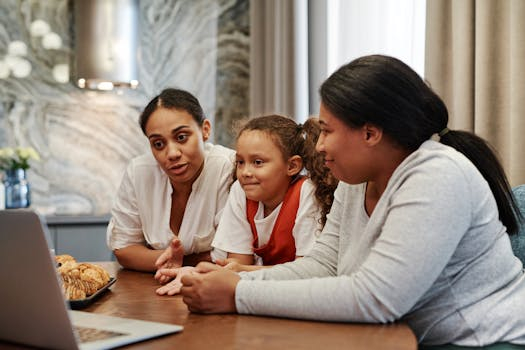The Return of the Multigenerational Home: A New Trend in Family Living
The traditional American family used to consist of parents, children, and maybe grandparents living under one roof. However, over the years, this norm shifted and the idea of a multigenerational home became less common. But as we step into a new decade, there has been a noticeable surge in the number of multigenerational households in the United States. This trend, also known as intergenerational living, is redefining the way families live and has become a popular choice for many. Let’s explore the reasons behind this trend and why it’s becoming the new norm in family living.
The History of Multigenerational Homes in the US
The rise of single-family homes and urbanization in the 1950s led to a shift in the traditional living arrangements of extended families. As adults pursued job opportunities in cities, the nuclear family became the dominant form of family structure. This trend continued until the early 2000s, where there was an increase in multigenerational homes due to the economic recession. Adult children, who couldn’t afford to live on their own, started moving in with their parents, and this trend continued even after the economy improved.
The Resurgence of Multigenerational Homes
In recent years, the multigenerational housing trend has been on the rise. According to a Pew Research Center analysis of census data, a record 64 million people (20% of the US population) lived in multigenerational homes in 2016, compared to 54 million (17% of the population) in 2009. This trend is likely to continue as the demand for multigenerational living steadily increases.
The Benefits of Multigenerational Living
One of the main reasons for the resurgence of multigenerational homes is financial. With rising costs of living, many families are finding it challenging to afford housing expenses, especially in cities where the cost of living is high. By having multiple generations living under one roof, families can share the financial burden and save on costs such as rent, mortgage, and utilities.
Another benefit of multigenerational living is the emotional support and social interaction it provides. In contrast to living alone or with roommates, the presence of family members can alleviate feelings of loneliness and isolation, particularly in older adults. This setup also creates a strong sense of community within the household, where family members can offer support and rely on each other during difficult times.
The Impact on Real Estate
The growing demand for multigenerational homes has also had a significant impact on the real estate market. Many home builders are now designing homes that cater to multigenerational families, with features such as separate living spaces, dual master suites, and even separate entrances. Real estate agents are also seeing an increase in demand for homes with potential for multigenerational living, making it a lucrative market for homeowners and investors alike.
The Challenges of Multigenerational Living
Despite its benefits, multigenerational living can also come with its challenges. Different generations may have conflicting ideas on living arrangements, household rules, and responsibilities. This can lead to disagreements and tensions within the household. To make this setup work, communication and compromise are crucial. It’s important to establish clear boundaries and expectations from the start to avoid conflicts.
In Conclusion
The return of the multigenerational home is a trend that reflects the shifting dynamics of the American family. It has its challenges, but the benefits outweigh them, making it an attractive living option for many families. As this trend continues to grow, we can expect to see more diverse and innovative living arrangements that cater to multigenerational households. With the financial and emotional benefits it provides, it’s no wonder that the multigenerational home has become a new trend in family living.







